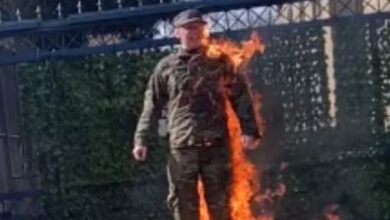California faces triple-digit temperatures and a fire risk as a dangerous heat wave sweeps over the US Southwest
California’s summer officially began on Thursday as a heat wave that has scorched most of the American Southwest brought triple digit temperatures and an increased danger of wildfires after an unusually rainy winter and gloomy spring.
The National Weather Service advised many Californians to be ready for the warmest weather of the year as blistering temperatures would worsen Friday and over the weekend in the central and southern regions of the state.
Most midday highs were predicted to be over 100 degrees (37.7 C), and forecasters warned that desert regions might see temperatures as high as 120 (48.8 C). Overnight, when temperatures might stay in the 80s (over 26.6 C), no reprieve was anticipated. Through Sunday, an extreme heat watch remained in place for San Luis Obispo, Ventura, Santa Barbara, and inland Los Angeles counties.
The weather service’s LA office said on Twitter, “Please plan accordingly, as this is not the time to be hiking or being outside for long periods of time.” “Shift hours to the early morning, take frequent breaks, and hydrate if you must work outside!”
Employers were urged to follow laws requiring outdoor employees to have access to water, shade, and frequent breaks to cool down. According to Jeff Killip of the Division of Occupational Safety & Health, the state will conduct spot inspections at work sites to ensure that the regulations are being followed.
More than 111 million Americans, largely in the Southwest, were under excessive heat advisories, watches, and warnings on Wednesday, according to the National Weather Service.
The prolonged heat wave, according to forecasters, is exceedingly harmful, particularly for old people, homeless people, and other vulnerable groups. Due to a high pressure dome moving west from Texas, the heat wave can last throughout the next week. In Arizona, it has been 110 degrees (43.3 C) or above for more than a dozen straight days. Due to worries about animal welfare, horse racing activities at the California State Fair close to the state capital were postponed.
According to Secretary Wade Crowfoot of the Natural Resources Agency, the hot, dry weather is causing California’s wildfire season to intensify, with a number of blazes breaking out this week around the state.
During a state media conference on Wednesday, Crowfoot said, “We are seeing an upswing in wildfire activity as we go further into the summer and vegetation that sprang up during the rainy spring dries out.
Crowfoot said that the effects of climate change were “supercharging” heat waves. A $400 million high heat response plan has been put in place by California to safeguard employees, support vulnerable areas, and help local municipalities build cooling facilities.
A wide variety of short-term and long-term objectives are included in the plan, which was unveiled last year as an update to state recommendations issued ten years earlier. To safeguard everything from schools to water sources from high heat, laws and regulations have been developed. These elements include raising public awareness via focused communication, statewide public health monitoring to detect heat disease episodes early on, and targeted communication.
According to officials, the state’s electricity grid, which in previous years saw numerous blackouts due to strain, has been strengthened and should be able to endure the most recent heat wave. Battery storage capacity reportedly hit 5,600 megawatts on July 1 — enough to power more than 3.8 million households for up to four hours before recharging — according to the California Independent System Operator, which manages the electrical system.
“The batteries being added to the grid are charged during the day, when solar power is abundant, and dispatched primarily in the evening hours, when demand is still high, the sun is setting, and solar capacity is diminishing,” Cal ISO stated in a statement.







